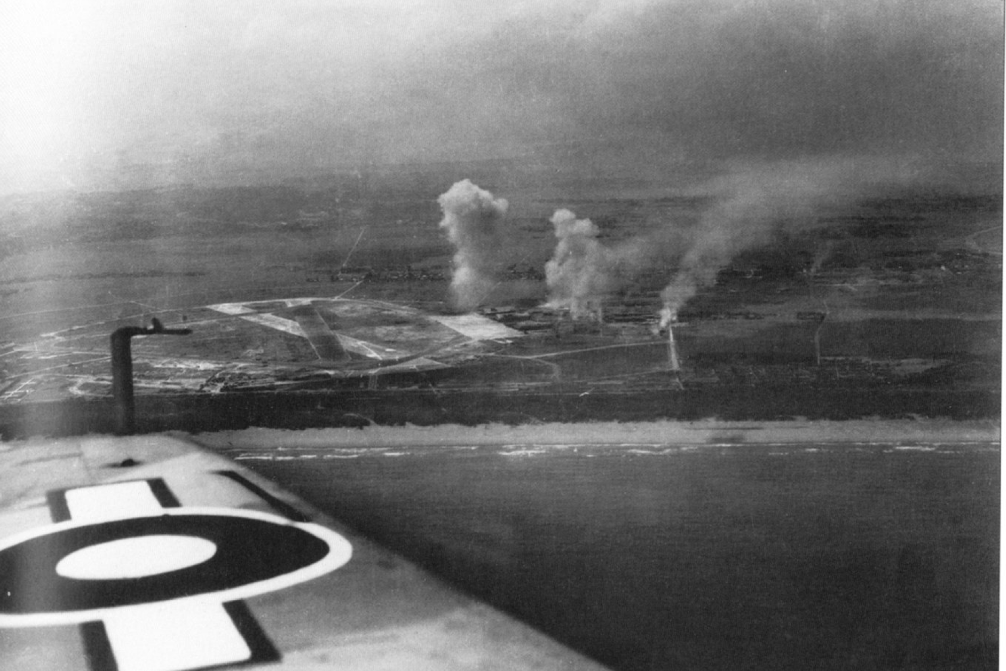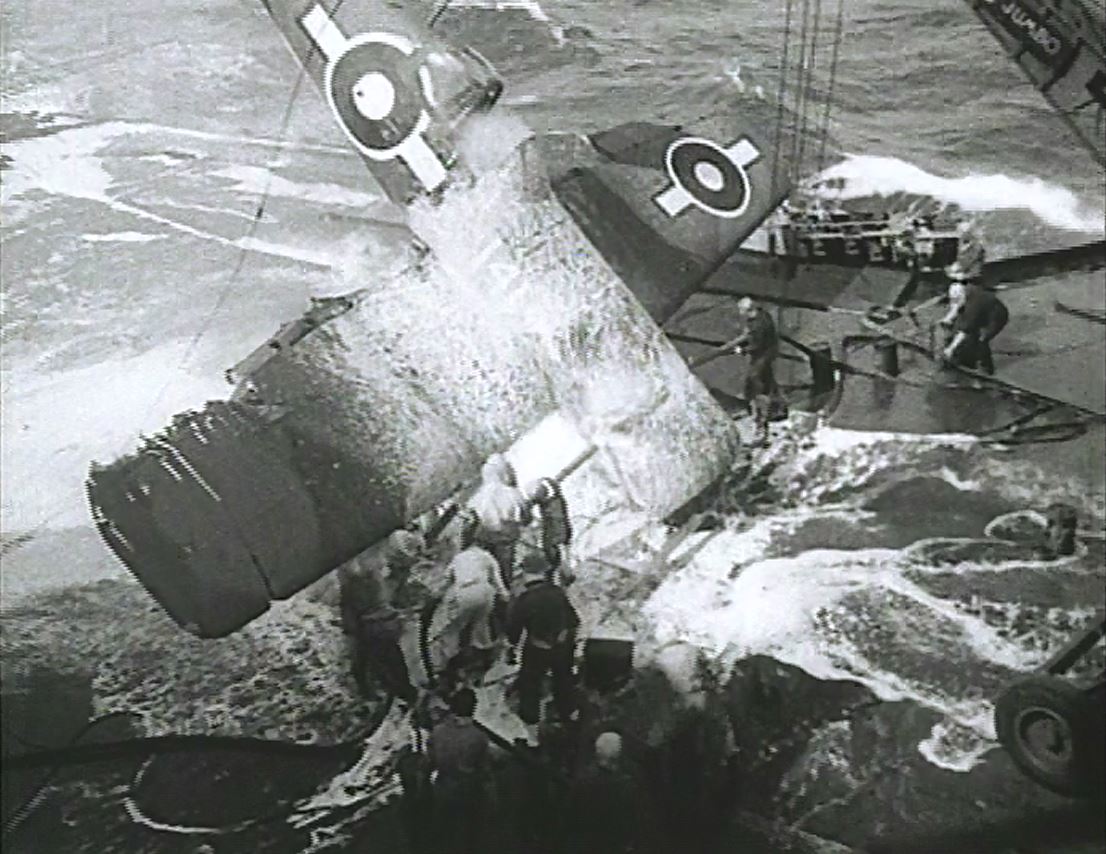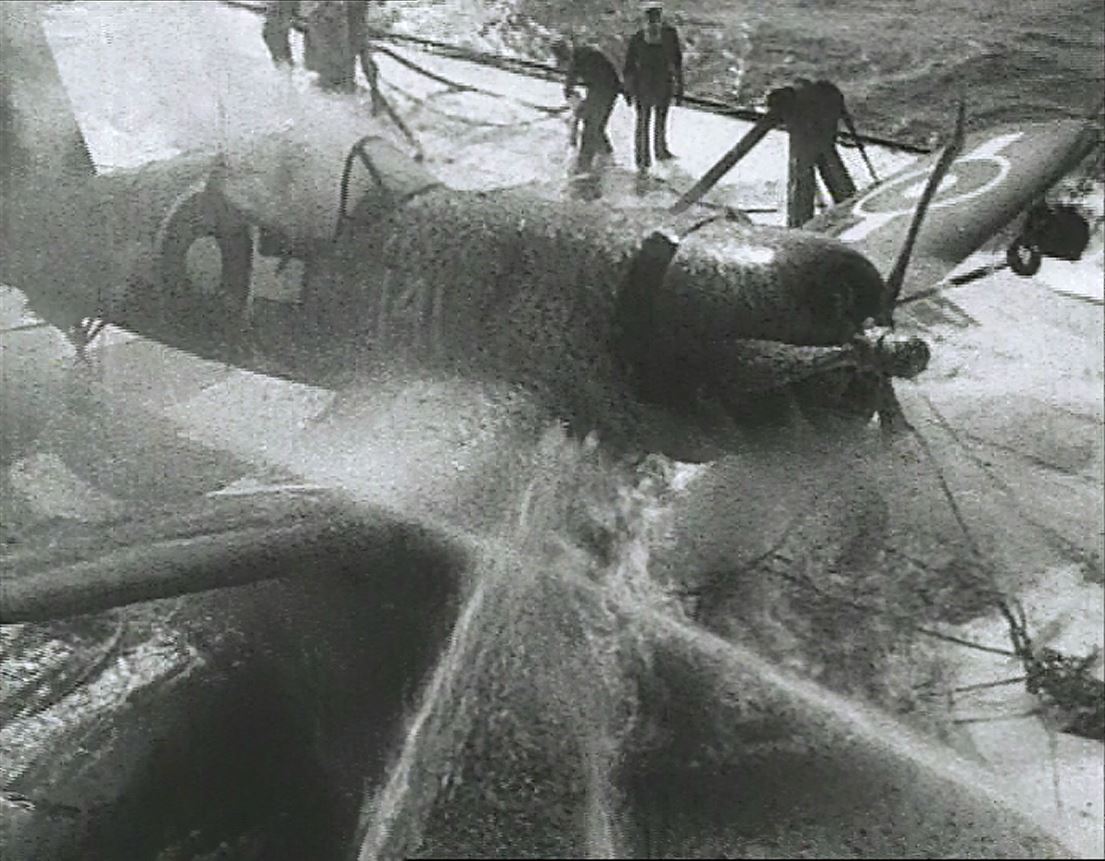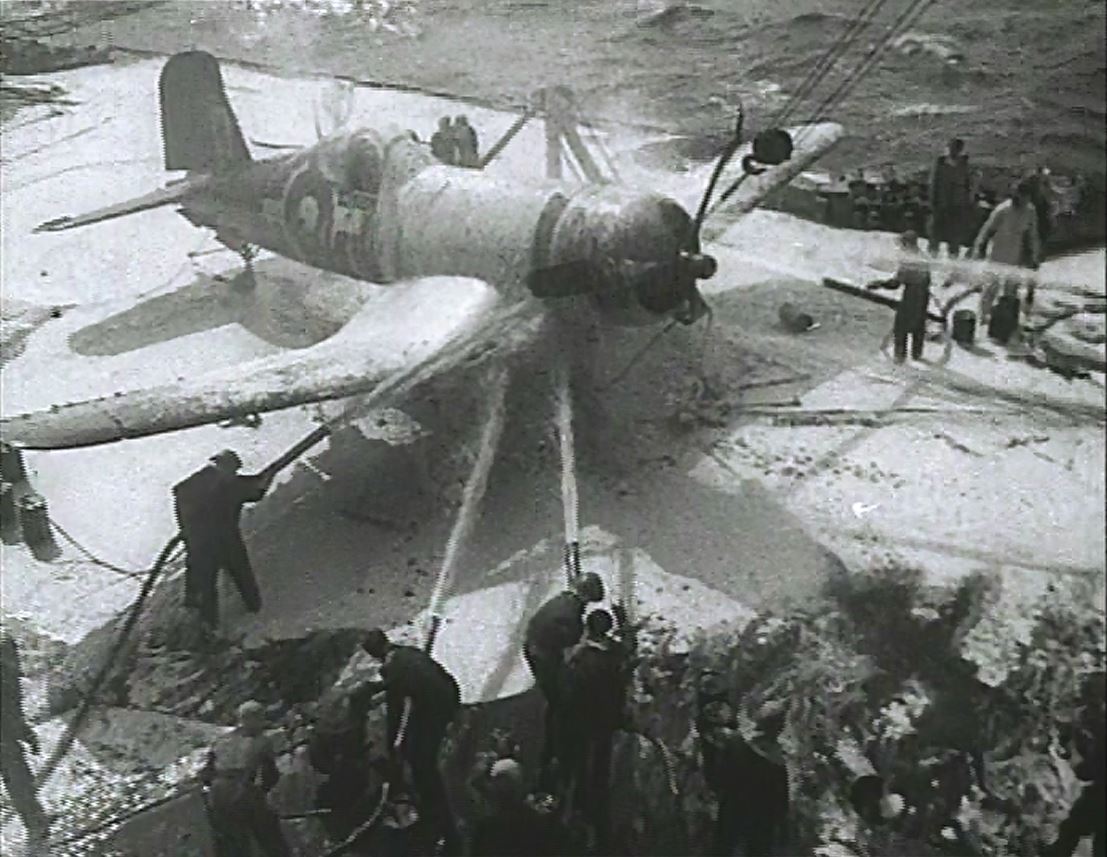April 16
When dawn broke, Task Force 57 found itself in the familiar territory of Sakishima for another two day programme of offensive CAP and strikes.
As the sun rose, radar vectored fighters towards a bogey detected at 20,000ft. The contact was able to escape before the FAA fighters were able to climb up to it.
At 0609 a flight of 1836 Squadron Corsairs was directed towards a group of contacts to the north-west of the fleet. One Zeke was shot down.
Unsurprised to find all the runways repaired, the fleet would launch the first of four Avenger and Firefly strikes at 0630.
Ishigaki, Hirara, Sukuma, Miyara, Gegina and Nobara were all attacked. The Avengers flew at 3000ft, dropping 500lb bombs armed with contact and delayed fuses.
The TarCAP, with little opposition in the air, engaged in several strafing runs. This was to prove costly. HMS Formidable’s air group would not have a good first day of combat: The CEO of 1842 Squadron was shot down in his Corsair while leading the TarCAP over Ishigaki.
Corsairs and Avengers aboard HMS FORMIDABLE
One of Formidable’s 848 Squadron Avengers was hit by flak and crashed into the sea just out from Hirara. Only the observer was able to bale out. Victorious’ ASR Walrus dashed close inshore and, while under small-arms fire from the coast, plucked the airman from the water as the Firefly TarCAP sat watchfully overhead, peeling off to engage the shore-based guns.
One of Indomitable’s Hellcat pilots was also shot down over Ishigaki, as well as an Avenger and all its crew when it was struck by 20mm defensive fire over Hegina.
Later in the afternoon a Japanese Myrt single-engine reconnaissance aircraft was detected stalking a US Privateer, an ASR patrol version of the famous Liberator. Two of 1844 Squadron’s aircraft on the CAP shot the Myrt down before it was able to do any damage.
At 1627 the radar offices reported a large group of bogeys at 110 miles to the west. Hellcats from the CAP were ordered to intercept, which they achieved some 55 miles out from the fleet. Two Zekes were shot down.
These would be the final Japanese aircraft to be shot down by the BPF during ICEBERG ONE.
That evening the fleet’s fighter direction officers were puzzled when several extremely fast-moving bogies heading towards the task force suddenly vanished from their screens as intercept fighters closed the range.
They were later determined to be Japanese Okha flying bombs. They had clearly been dropped from their parent aircraft too far from the feet and the rocket-powered warheads ran out of fuel before reaching the fleet.
USS INTREPID erupts after a kamikaze strike.
News filtered through to the BPF’s command staff of a third “kikusui” attack on the US Fifth Fleet. The carrier USS Intrepid had been hit and so badly damaged that she had to be withdrawn to Pearl Harbour. The battleship Missouri also had been struck and a destroyer sunk.
The USN was suffering serious damage to its carrier force.
HMS INDEFATIGABLE'S Seafires arranged on deck.
April 17
Task Force 57 was now critically short of fighters. No replacement aircraft had been delivered to the replenishment rendezvous areas since April 9.
While the fleet had suffered no dramatic loss of aircraft in any single engagement, the attrition to Japanese flak and wastage through accidents had whittled the number of crew and machines down significantly.
The Seafire in particular had proven problematic. It was now necessary to conserve the few remaining operational interceptors even though the TarCAP of Corsairs and Hellcats over Sakishima Gunto needed to be maintained.
But the Seafire was not the only problem.
HMS Victorious had set out for ICEBERG with 43 Corsair pilots and 17 Avenger crews. By the 17th, only 30 Corsair pilots and 14 Avenger crews remained fit for flying.
To overcome the CAP difficulty, a small force of Corsairs and Hellcats was launched at dawn to act as high cover. The Fireflies were assigned to “JACK” close-in defensive patrols.
Eight Seafires were held in readiness on Indefatigable’s deck from dawn. If not needed to respond to a raid, they would be launched from 0900 as fleet CAP and JACK patrols. Another eight would then take their place, ready on Indefatigable’s deck. From 1200, four Seafires would participate in the CAP with another four held at the ready.
The morning’s TarCAP reported the airfields at Ishigaki were still disabled after the previous day’s strikes. Three Avenger strikes were diverted to Miyako. The fourth strike was left with nothing to do once this airfield was knocked out of service.
HMS King George V had a fright when a blazing object was seen plunging towards the ship. Her gunners opened fire, and a cylinder was seen to splash into the sea alongside. It was later determined to have been a fuel tank jettisoned by a CAP Corsair.
Admiral Rawlings was unimpressed: He commented that both battleship and aircraft had “missed”.
At 1945, TF57 withdrew to RAS rendezvous “Mosquito”.
Admirals Rawling and Vian remained concerned at the constant pressure their American allies were under off Okinawa. So they offered Admiral Spruance one more day of strike operations, and the US commander readily accepted.
April 18 & 19
The underway replenishment again demonstrated improvement, though the USN laison officers were correct in assessing it as being nowhere near 5th Fleet standards.
The arrival of three reinforcing destroyers – HMAS Napier, HMAS Norman and HMAS Nepal – along with the return of HMS Undaunted boosted Admirals Rawling’s confidence in the Task Force’s flak screen, despite the shortage in CAP fighters.
Late on April 19, the British Pacific Fleet once again set course for Sakishima Gunto.
April 20
CAP was launched at the usual hour, 0600. Four strikes of Avengers and rocket-armed Fireflies were launched against Sakishima Gunto’s airfields. They were once again protected by both a close escort and a CAP positioned over the targets.
The Fireflies were instructed to use their rockets against coastal shipping and other targets of opportunity. The Avengers, as usual, were to drop their ordinance primarily on the airfields.
A FireFly launches from an unidentified carrier.
An Avenger of 848 Squadron was hit over Ishigaki and crashed into the sea. Its aircrew managed to escape and were picked up by an American “Dumbo” aircraft some 24 hours later.
A quick assessment of their damage showed all runways except Hirara had been cratered sufficiently to put them out of action. Hirara was judged “only partially cratered”.
No serious Japanese air activity was encountered.
At 1910, Task Force 57 set sail for Leyte Gulf.
As Task Force 57 turned for Leyte, the US Marines continued their struggle to secure Okinawa. The latest offensive against Shuri had only advanced 1.5 miles in eight days, with a casualty rate of 1000 killed or wounded each day.
Three days later, on April 23, the fleet entered San Pedro anchorage in Leyte after being continuously at sea for 32 days, 26 of which had been spent in hostile territory. Offensive operations had been conducted on a total of 12 days.
Perhaps as a consequence of the tough tropical conditions, HMS Gambia arrived at the port with 45 cases of the mumps on board.











